
The sap beetles, also known as Nitidulidae, are a family of beetles.
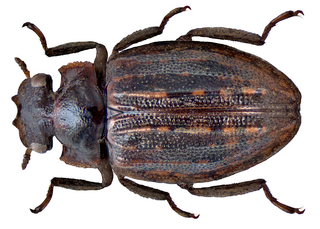
Spercheus is a genus of aquatic beetles which are placed in a family of their own, Spercheidae within the Hydrophiloidea. About 20 species are known from around the world except the Nearctic with the majority being from the Oriental and Afrotropical Realms.

The Dytiscidae – based on the Greek dytikos (δυτικός), "able to dive" – are the predaceous diving beetles, a family of water beetles. They occur in virtually any freshwater habitat around the world, but a few species live among leaf litter. The adults of most are between 1 and 2.5 cm (0.4–1.0 in) long, though much variation is seen between species. The European Dytiscus latissimus and Brazilian Megadytes ducalis are the largest, reaching up to 4.5 cm (1.8 in) and 4.75 cm (1.9 in) respectively. In contrast, the smallest is likely the Australian Limbodessus atypicali of subterranean waters, which only is about 0.9 mm (0.035 in) long. Most are dark brown, blackish, or dark olive in color with golden highlights in some subfamilies. The larvae are commonly known as water tigers due to their voracious appetite. They have short, but sharp mandibles and immediately upon biting, they deliver digestive enzymes into prey to suck their liquefied remains. The family includes more than 4,000 described species in numerous genera.
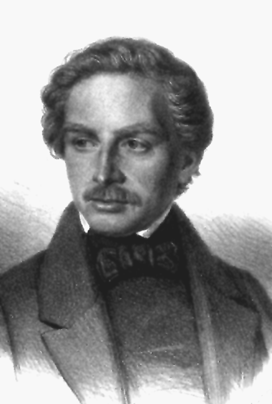
Dr Wilhelm Ferdinand Erichson was a trained medical doctor and a German entomologist.

Copelatus is a large genus of small diving beetles. There are some 470 described species in the genus, found worldwide, but they are most diverse in tropical South America, Africa and South-East Asia. Copelatus are often black or brown in color, many species of Copelatus possessing visible longitudinal furrows down the dorsal side of the wings of both sexes.
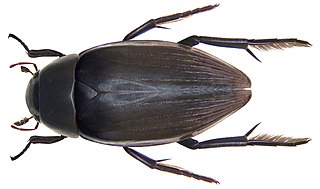
Hydrophilus is a genus of beetles in the family Hydrophilidae, the water scavenger beetles. There are 53 species in three subgenera in the genus: Hydrophilus, Dibolocelus, and Temnopterus.

Canthydrus is a genus of beetles in the family Noteridae, containing the following species:

Berosus is a genus of beetles in the family Hydrophilidae, the water scavenger beetles. The genus contains 273 species. It is distributed worldwide.

Enochrus, a genus of water scavenger beetles, is the third-largest genus of hydrophilids with 222 species in six subgenera worldwide.

Helochares is a genus of water scavenger beetles in the family Hydrophilidae, represented by 161 described species. It is distributed across the Afrotropical, Australasian, Indo-Malayan, Nearctic, and Palearctic realms.

Laccobius is a genus of water scavenger beetles in the family Hydrophilidae. There are more than 80 described species in Laccobius.

Hydrobiomorpha is a genus of water scavenger beetles in the family Hydrophilidae. There are 56 extant described species in Hydrobiomorpha, along with several fossil species.

Coelostoma is a genus of beetles belonging to the family Hydrophilidae. The genus was first described by Brullé in 1835. The genus has cosmopolitan distribution, with 111 described species, representing one of the most diverse genera of Hydrophilidae.
Regimbartia is a small genus of beetles belonging to the family Hydrophilidae comprising ten species distributed throughout Africa, South Asia, South East Asia and Australia.
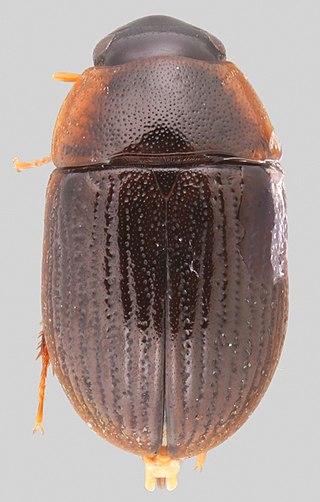
Agraphydrus is a genus of water scavenger beetle in the family Hydrophilidae represented by 205 described species. It is distributed across the Afrotropical, Australasian, and Indomalayan realms.
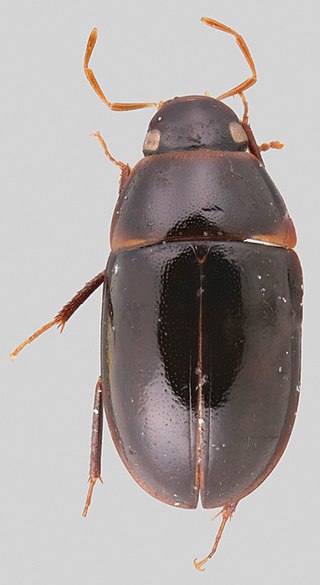
Crephelochares is a genus of water scavenger beetle in the family Hydrophilidae represented by 29 described species. It is distributed across the Afrotropical, Australasian, Indo-Malayan, and Palaearctic realms.

Peltochares is a genus of water scavenger beetles in the family Hydrophilidae represented by eight described species. It is distributed across the Afrotropical, Australasian, Indo-Malayan, and Palaearctic realms.
Amphiops micropunctatus is a species of water beetle in the family Hydrophilidae, first described by Chris H.S. Watts in 1998.
Amphiops austrinus is a species of water beetle in the family Hydrophilidae, first described by Chris H.S. Watts in 1998.

Allocotocerus is a genus of water beetles in the family Hydrophilidae, first described by Ernst Gustav Kraatz in 1883. The decision for synonymy is based on Hansen (1999).

















